Magnelab offers a large array of products for power monitoring. They offer several styles of AC current sensor or DC current sensor including models that feature a Rogowski coil, split-core and solid core design. Magnelab has a current sensor to suit almost any need.
Founded in Boulder, CO, in 1968 by Carl Forsberg, our company first started as ‘Magnetek’. We then manufactured simple products like antenna coils, but quickly expanded into more complex products, including military switching components. Our company was taken over by the Solomon Corporation in 1995. Soloman was a leading developer for the electrical industries and utilities, creating regulators, enclosers and transformers. When Magnelab was purchased by them, we moved to our Longmont, CO, facility, just north of the city of Denver. Currently, we are owned by Miami, FL based company Manutech. They have been in the field of designing and manufacturing magnetics components for nearly half a century and some 350 people are proud to be employed by them in their offshore facility.Today we create products that service the energy monitoring industry by delivering a number of products, including our precision current transformers. This line of products includes the Rogowski flexible CT options, the split core current sensors (opening type), the toroidal current sensors (non-opening type) and various precision potential transformers.
Our goal is to offer the highest quality products as quickly as possible for our customers, regardless of the volume of their order and we always make sure our pricing is highly competitive. Because we work together with an offshore company, we have very low carbon costs. In fact, these are the lowest in all of the Western hemisphere. As a result, no other supplier is truly able to compete with our prices.
Our company is fully ISO 9001:2008 certified. This proves the quality of our products and the fact that we are committed to improvement. All our products, from our electrical transformer to our flyback transformer and from our step down transformer to our control transformer, all meet those same ISO certifications.
Our manufacturing and engineering organization is fully staffed. This allows us to come up with innovative designs, such as our isolation transformer and our 24v transformer. We can also build from print, or design completely new devices as per specifications. This is, for instance, how we developed our low voltage transformer and our high voltage transformer, which have both proven to be very popular. Our goal is to build a long lasting professional relationship with our customers, which means that if they have specific needs they want to apply to a standard power transformer or to the RCT-350T flexible AC current sensor, for instance, we will do our best to achieve that.
We offer a huge selection of current sensors, current transformers, flexible core coils (Rogowski), split-core current transformers and more. Whatever you need to get the job done right, we have what you require and will always go that extra mile. Show Less
Magnelab is a world leader in their field. They manufacture several types of high-quality AC current sensor. They are well known for their split core AC current sensors like the SCT-0750 and the Magnelab RopeCT (Rogowski coil) as well as other designs and models. They provide nearly all designs of AC current sensor that could possibly be needed for any application, both commercial and residential.
Because there are so many different options, it is now possible to narrow down your search. You can now search by TYPE, by PRODUCTS, or by SPECIFICATIONS. Should you find that the device you require is not available in our portfolio, please contact us and we will assist you in any way we can. Additionally, we are able to customize our products should you require a custom connector installation, a longer lead length or a unique voltage output to name but a few.
An AC current sensor is a device that detects AC electric current within a wire. Then it generates a return signal that is proportional to the detected current. This signal that is generated by an AC current sensor can be analog current or voltage, or it can use a digital output. It can then be used in a variety of different ways, for instance by displaying how much current was measured in an ammeter. Other devices can be used to store the signal, which allows them to be analyzed further. The ACT-0024-1 split core current sensor, for instance, is often used for control purposes or within a data acquisition system.
Different sensors sense different things and have a different output signals as well. As such, alternating current input can be analog, in which case the sensed current’s wave shape is duplicated. It can also be bipolar, whereby the sensed current’s wave shape is also duplicated. Or it can be a unipolar output. In this case, the output is proportional to the sensed current’s RMS or average value. It is also possible for a current sensor to have a direct current input. In this case, it can be unipolar, using a unipolar output. Here, the sensed current’s wave shape is duplicated. Alternatively, it can use a digital output, whereby the sensor switches whenever it senses that the current exceeds a predetermined threshold.
One of the most common technologies used within current sensors is the Hall Effect sensor. This is based on the Hall Effect, which is a discovery made in 1879 by Edwin Hall. In this system, all the different current signal types, such as pulsating, DC or AC current, can be measured by the sensors. This is one of the most popular types of sensors because they can be used in so many different applications. Additionally, their output can be used in many different ways and it can be manipulated as well. Besides Hall Effect IC sensors, there are also current clamp meters or transforms (only on AC current), resistors (with proportional voltage), fiber optic current sensors (using magnetic fields to measure light changes) and Rogowski coils (an electrical tool that measure high speed current pulses or alternating current). All options are available through Magnelab and specifications are provided.
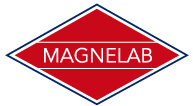



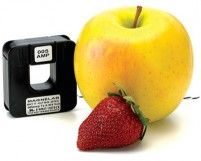
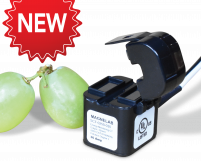
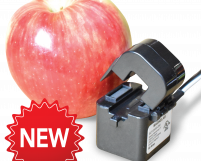


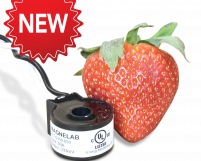
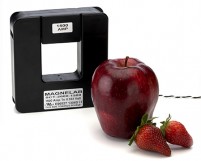
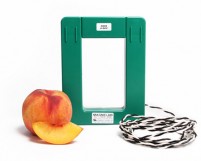

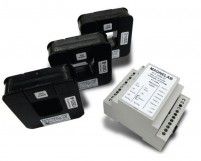


Recent Comments